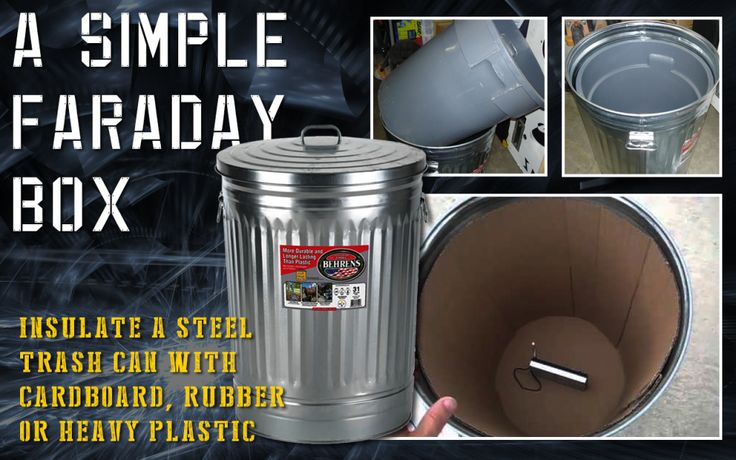A Faraday box is the easiest way of protecting most small electrical equipment that can be unplugged from the power source.
A Faraday box is a metal box designed to divert and soak up the EMP. If the object placed in the box is insulated from the inside surface of the box, it will not be affected by the EMP travelling around the outside metal surface of the box. The Faraday box simple and cheap and often provides more protection to electrical components than “hardening” through circuit designs which can’t be (or haven’t been) adequately tested.
Many containers are suitable for make-shift Faraday boxes: cake boxes, ammunition containers, metal filing cabinets and so on. Despite what you may have read or heard, these boxes do NOT have to be airtight due to the long wave length of EMP; boxes can be made of wire screen or other porous metal and be equally effective.
The Faraday box is a great solution assuming that you aren’t using the equipment when the event occurs. (not likely) It is highly advised that you prepare a “back-up plan” Faraday box filled and ready for such an occasion. Shortwave radio, weather radio, small television, spare telephone and anything else you may need after.
Do remember that the power grid will likely be wiped out so anything you keep will have to run off of a fuel powered generator. You should be focused on staying informed but not needlessly entertained.

The only two requirements for protection with a Faraday box are:
(1) The electrical equipment inside the box can’t touch the metal container. Insulating with cardboard, rubber, plastic or even wads of paper are acceptable methods.
(2) The metal shielding must be continuous. There can be no large holes or gaps in the shielding.
[source]




